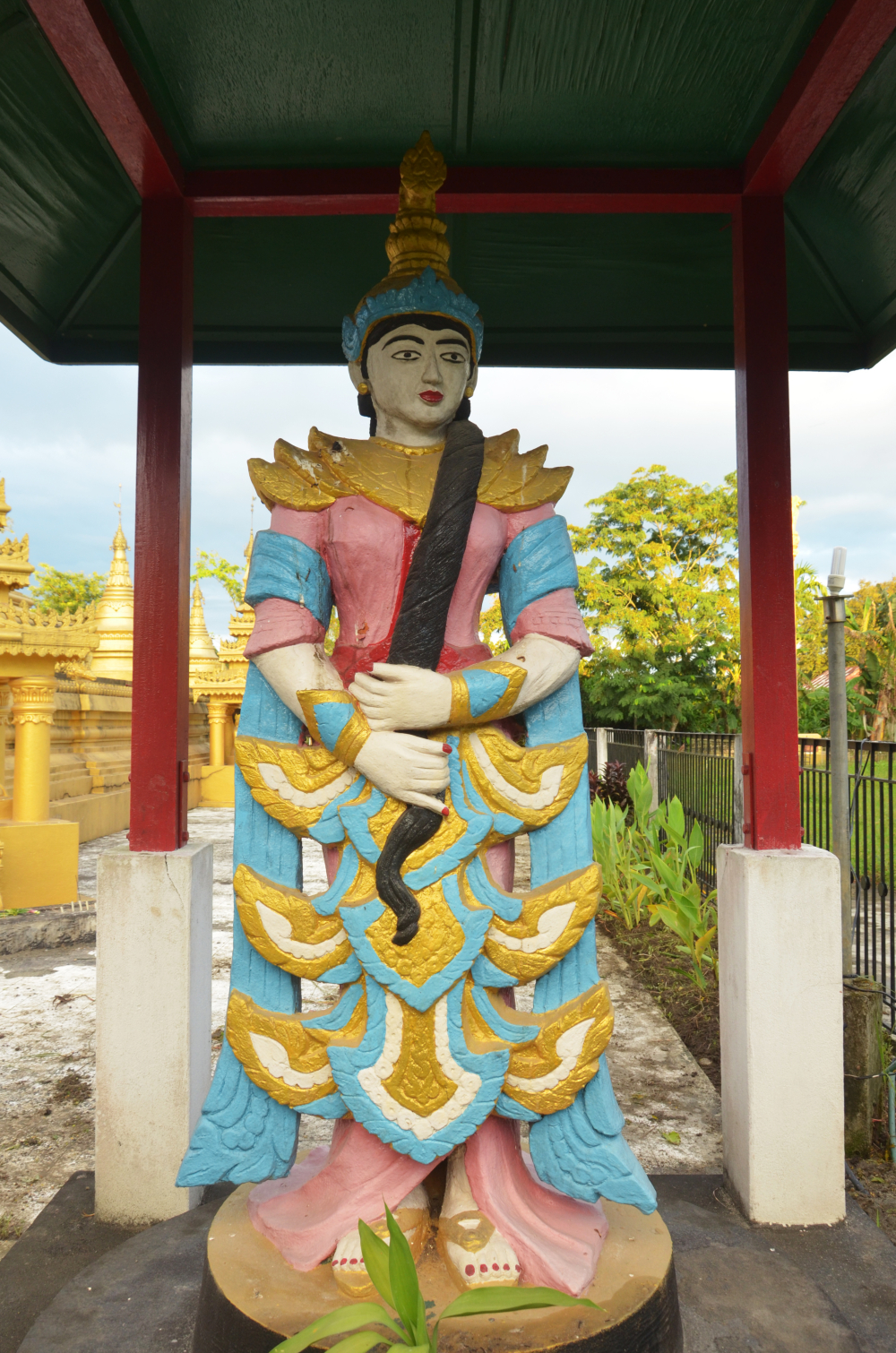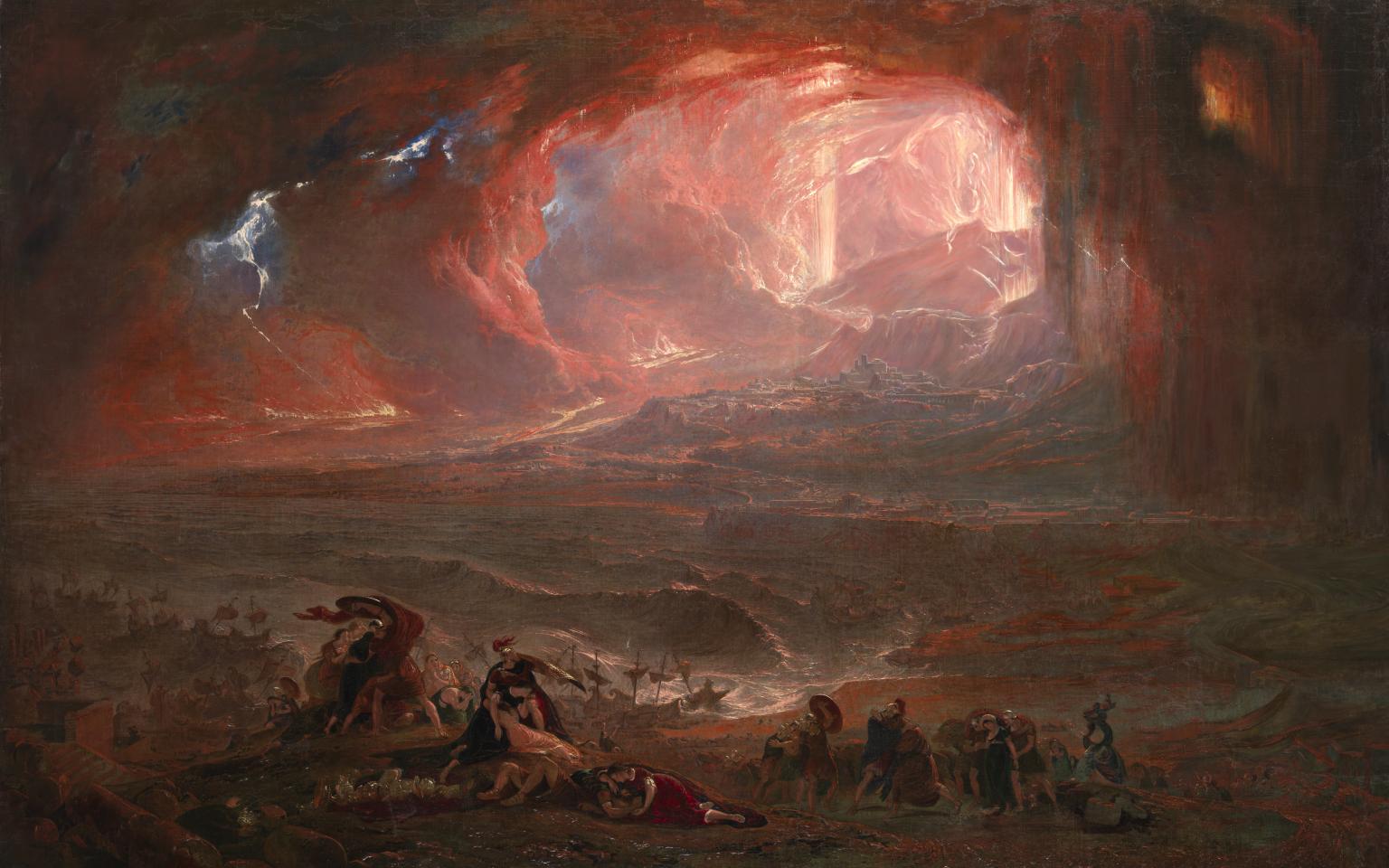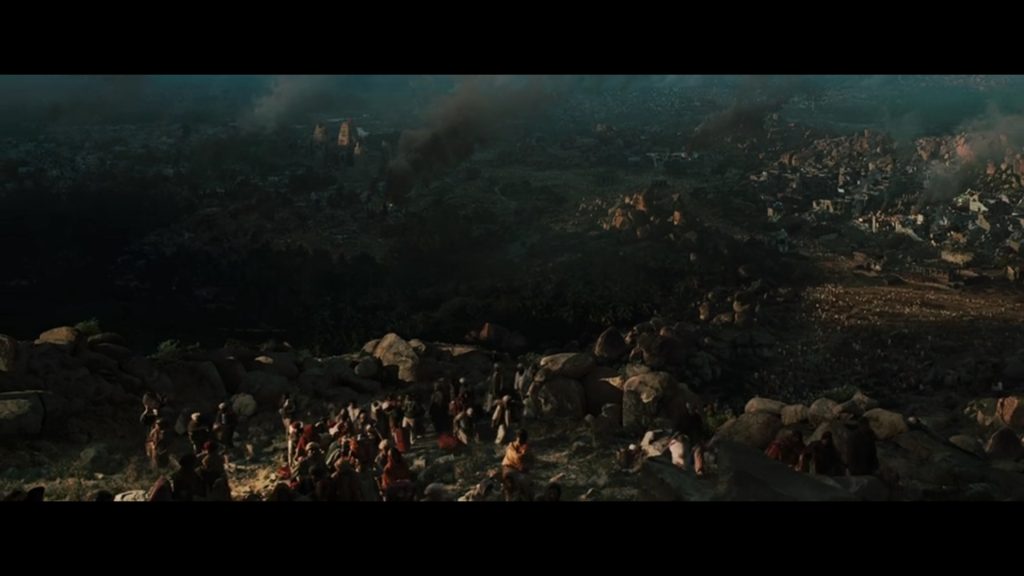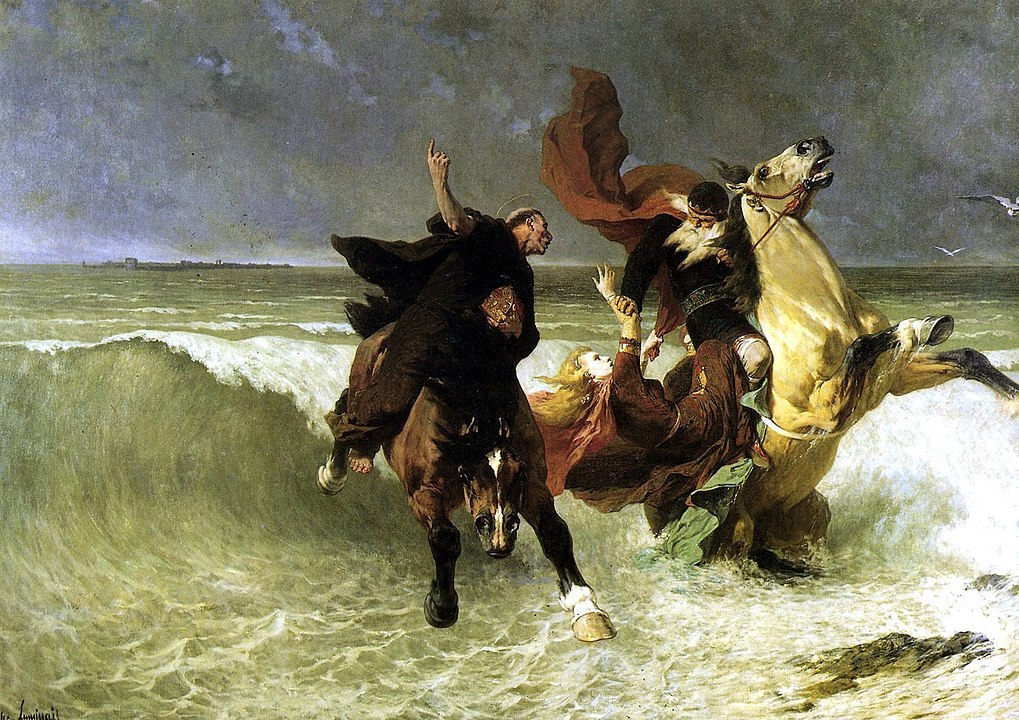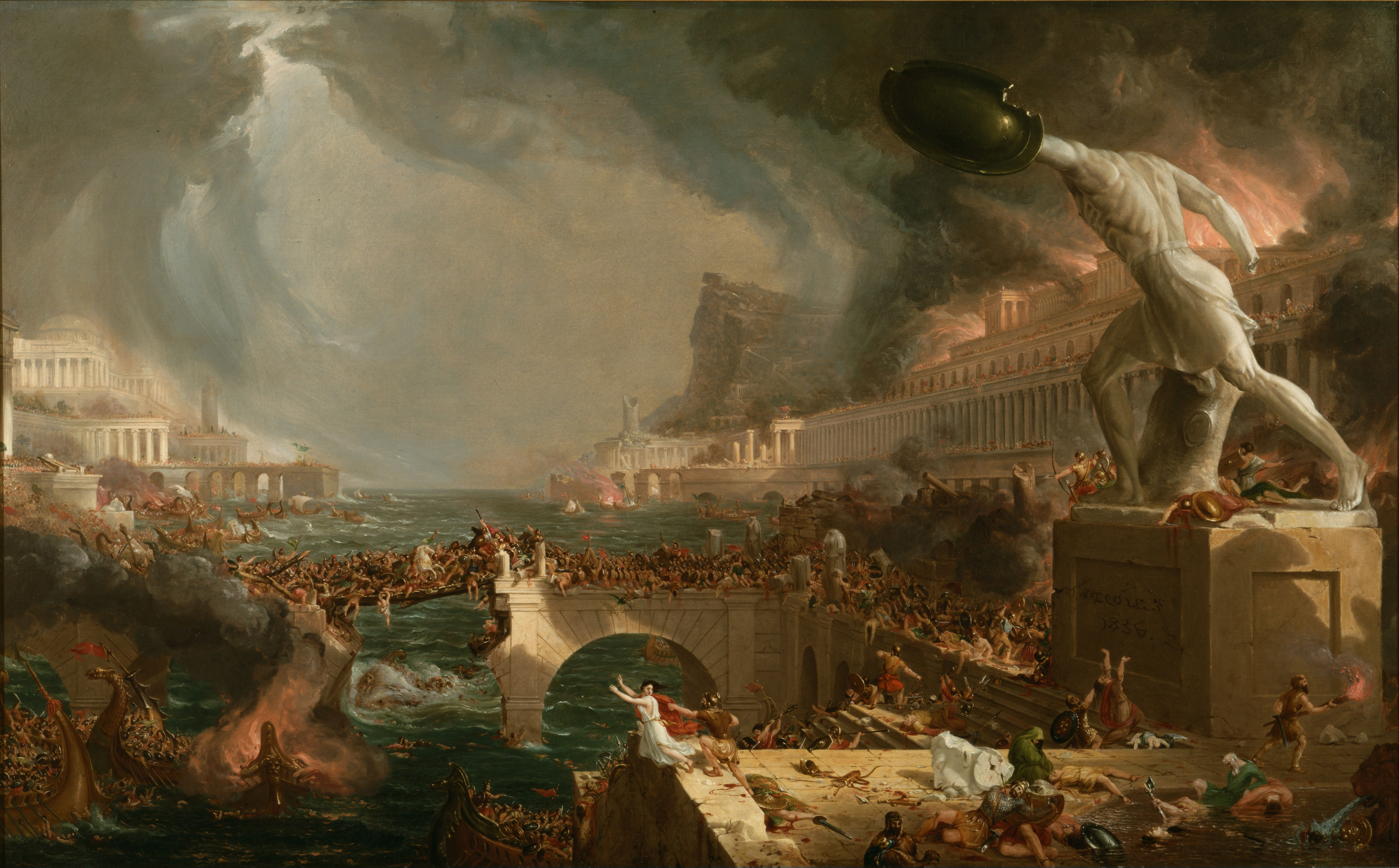
English-American painter Thomas Cole (1801 – 1848) created a series of five images depicting the rise and the destruction of an imaginary coastal city. The series is entitled “The Course of Empire”. Above, the fourth painting depicts the catastrophe and destruction of the city. Cole imagined here a junction of various man made and natural disasters: Insurgence, war, fires, storms and a flood.
In the final, fifth image the scene is set several decades after the destruction. Here nature has reclaimed the urban landscape and there is a peaceful, maybe even idyllic calm to the scene. From today’s point of view, this seems like an environmentalist comment on our current debates.



